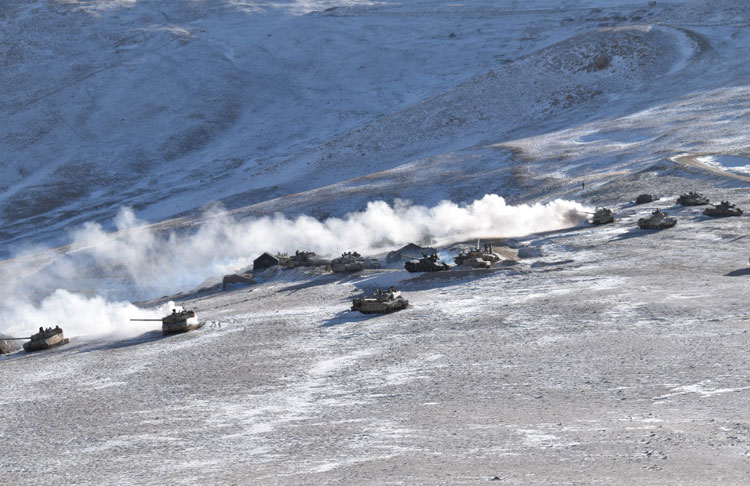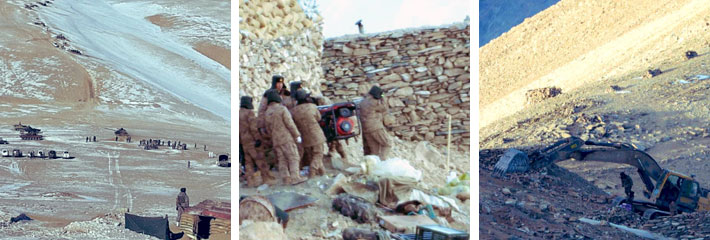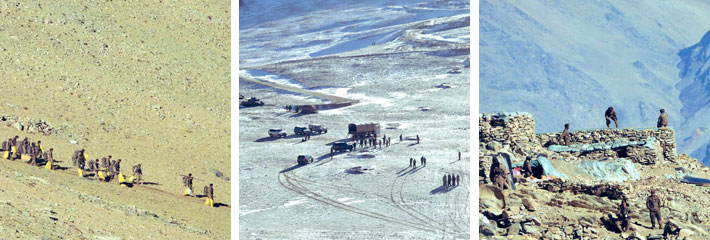INDIAN ARMED FORCES CHIEFS ON OUR RELENTLESS AND FOCUSED PUBLISHING EFFORTS

The insightful articles, inspiring narrations and analytical perspectives presented by the Editorial Team, establish an alluring connect with the reader. My compliments and best wishes to SP Guide Publications.

"Over the past 60 years, the growth of SP Guide Publications has mirrored the rising stature of Indian Navy. Its well-researched and informative magazines on Defence and Aerospace sector have served to shape an educated opinion of our military personnel, policy makers and the public alike. I wish SP's Publication team continued success, fair winds and following seas in all future endeavour!"

Since, its inception in 1964, SP Guide Publications has consistently demonstrated commitment to high-quality journalism in the aerospace and defence sectors, earning a well-deserved reputation as Asia's largest media house in this domain. I wish SP Guide Publications continued success in its pursuit of excellence.
- MoD initiates comprehensive review of Defence Acquisition Procedure 2020, pushes for defence reforms
- G7: The Swansong
- Kalinga Connect: South Asia to Polynesia
- Must Credit DRDO for Operation Sindoor, now what is next for defence R&D?
- The layered Air Defence systems that worked superbly, the key element of Operation Sindoor
- Operation Sindoor | Day 2 DGMOs Briefing
- Operation Sindoor: Resolute yet Restrained
Pullback From Pangong Tso
Agreeing to vacate positions that are dominating PLA’s Moldo Garrison in South Bank of Pangong Tso is a strategic blunder. It is a masterstroke for China in having us vacate these heights even before discussing any disengagement at Depsang.
 |
The Author is Former Director General of Information Systems and A Special Forces Veteran, Indian Army |

The pullback of Indian and Chinese troops from both banks in Pangomg Tso Lake area commenced on February 10, 2021, which has been hailed as a “significant breakthrough” in the India-China standoff since May-June 2020. Ground-level commanders from both sides reportedly held a meeting over the pullback on the Pangong Lake on February 9 to tie up all ends after a go-ahead for the preparatory phase of on-ground disengagement was given to the respective armies from New Delhi and Beijing. Another meeting between ground-level commanders was held on February 10 to streamline the disengagement process.
Wu Qian, Senior Colonel and spokesperson for China’s Ministry of National Defense had issued a written statement that said, “The Chinese and Indian frontline troops at the southern and northern bank of the Pangong Tso Lake start synchronised and organised disengagement from February 10. This move is in accordance with the consensus reached by both sides at the 9th round of China-India Corps Commander Level Meeting.”
Defence Minister Rajnath Singh gave a statement in Rajya Sabha on February 11 stating that India and China have agreed to disengage from the Pangong Tso area and both sides will cease their forward deployments in a phased, coordinated and verified manner. He reminded the house that China had amassed large number of troops and armament since April/May 2020 “adjacent” to Eastern Ladakh and made several attempts to transgress (pseudonym for intrusions) the LAC in various parts and that these actions were detected and appropriately responded to by our armed forces (we missed the opportunity to capture Galwan Heights on night of June 15-16, 2020 because of political dithering).
He acknowledged that Chinese actions since last year have seriously disturbed peace and tranquility with China having mobilised large number of troops and armaments “along the LAC” as well as in the depth areas. He said many strategically important points were identified in Pangong Tso area and our troops positioned themselves at those Hill Tops and at locations which were very important from our point of view and because of this and the bravery of armed forces we maintained the edge.


Rajnath informed Rajya Sabha that the disengagement agreed to in the North and South Bank of the Pangong Lake includes: both sides to cease their forward deployments in a phased, coordinated and verified manner; Chinese troop presence in North Bank to continue east of Finger 8; Indian troops to be at Dhan Singh Thapa Post near Finger 3; similar action to be taken in the South Bank by both sides; structures built by both sides since April 2020 on both banks to be removed and landforms restored; temporary moratorium on military activities by both sides in North Bank including patrolling; patrolling to be resumed only when both sides reach a subsequent agreement, and; implementation of the agreement will substantially restore the situation to that existing prior to commencement of the standoff last year. He assured the House that nothing had been conceded in these talks.
India should have ensured that if disengagement was to be discussed in phased manner, Depsang was given first priority given its strategic importance and the fact that PLA is lodged 20 km deep at Y-Junction where it had also intruded in 2013 and the issue was discussed then in Parliament. We should not lose sight of China’s long-term strategic aim of joining hands with Pakistan along the Shyok River, capturing Siachen Glacier and reviving the old Silk Route through the Karakoram Pass. Agreeing to vacate Kailash Range, hilltops covering the Spanggur Gap and heights around Chushul that are dominating PLA’s Moldo Garrison in South Bank of Pangong Tso is a strategic blunder since these heights gave India an edge, as mentioned by Rajnath. It is a masterstroke for China in having us vacate these heights even before discussing any disengagement at Depsang.
During the Kargil Conflict, India had reduced its deployment in North Bank of Pangong Lake to a post at Finger 4. PLA built bunkers on the spur coming down towards this post in recent months and dug a ditch east of Finger 4 during the current aggression to stop our troops patrolling up to Finger 8 as earlier. Evidentially, we are now content with a near Finger 3 or rather between Fingers 2 and 3.
The proposed moratorium to recommence patrolling may take few months as it will only be discussed after complete disengagement has been affected. Till then our troops will not be able to patrol east of Finger 3 in North Bank of Pangong Lake. With PLA at Y-Junction in Depsang, the ITBP stopped patrolling to Patrol Point (PP) 10, 11, 11A, 12 and 13 – all of which are short of the LAC. Other friction points include PP14 in Galwan Valley, PP15 in Hot Springs and PP17A in Gogra Post area.
China will unlikely agree to withdraw from Y-Junction in Depsang which gives it a great strategic advantage for further operations towards Daulat Beg Oldi (DBO) and the airstrip in the vicinity, terming it part of its 1959 claim line. As for patrolling, China will insist on buffer zones which will all be in Indian Territory. Moreover, with the type of new permanent camps set up proximate to Galwan Heights, Depsang and other location, concentration and consolidation of PLA troops will continue, ready for the next opportunity. Apparently, China has managed to force its decision on India. Our low defence budget for financial year 2021-2022 will encourage China more.





